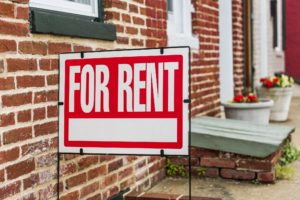 Homeownership rates are approaching their historic average, but in most major metro areas, Americans are split evenly on renting versus homeowners, according to data from CJ Patrick Company.
Homeownership rates are approaching their historic average, but in most major metro areas, Americans are split evenly on renting versus homeowners, according to data from CJ Patrick Company.
Rick Sharga, Founder and CEO of CJ Patrick Company, notes that, according to the First American DataTree 24 markets presenting better buying opportunities and 26 markets skewing towards renting. Of the top 50 markets, 14 had rent-to-buy ratios between 0.9% and 1.1%, meaning that there was very little difference in the monthly costs of rent compared to home payments.
Many of the top 10 renter markets were focused on the West Coast, including several California cities in the top spots: San Jose, Los Angeles, San Francisco, and San Diego. Also in the top 10 rental markets is Seattle, which took the second-highest single-family rent price growth in October 2019.
“There were some outliers in the top 10 Renters markets,” said Sharga. “Los Angeles had a homeownership rate over 16 points lower than the national average at 48.2% – the lowest homeownership rate of the 50 largest metro areas. Only two of the top 10 Renters markets had a homeownership rate higher than the national average: Salt Lake City (69.5%) and Sacramento (67.7%).”
On the other hand, buyers markets are located primarily in the Midwest and Southeast, according to the report. Memphis had the highest rent-to-buy ratio, with monthly rental costs of $914 nearly twice as high as the monthly payments of $462 for purchasing a home in the 25th percentile. In addition to Memphis, Birmingham, Pittsburgh, Jacksonville, Oklahoma City, St. Louis, Tampa, Atlanta, Miami and New Orleans comprised the top 10 metro areas where monthly home payments were significantly lower than median rental payments.
Whether buying a home or renting a home is more affordable often depends on the type of market. While buying is the more affordable option in just a little more than half of U.S. counties, it tends to be the less affordable option in more dense metro areas, according to ATTOM Data Solutions’ latest Rental Affordability report.
Overall, buying is more affordable in 53% of the 855 counties ATTOM Data Solutions tracks.
Acknowledging the current affordable housing crunch, Todd Teta, Chief Product Officer at ATTOM Data, said, “For sure, either buying or renting is a financial stretch or out of reach for individual wage earners throughout most of the country in the current climate. But with interest rates falling, owning a home can still be the more affordable option, even as prices keep rising.”
The single-family rental investment market is poised for continued growth. On March 24-25, 2020, the Five Star Single-Family Rental Summit will unfold at the Four Seasons Resort & Club at Las Colinas in Dallas, bringing together industry experts for focused discussions on the future potential of this sector.

 DSNews The homepage of the servicing industry
DSNews The homepage of the servicing industry










